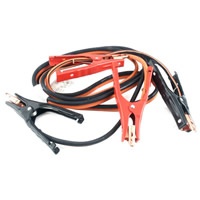How to jump start your car

Step 1 - Get the Right Equipment
Before anything else, you will need another car to stop and offer help. But you can't count on just anyone to be kind enough to pull over AND to also have the proper jump-start equipment. Meet your fellow motorists halfway by making room in the trunk of your car for 100-percent-copper heavy gauge (4-8 gauge) jumper cables. You want your cables to be at least 25ft. long so that they are easier to use with most types of vehicles.
Step 2 - Make Sure Your Battery Can Be Jump-Started
If your battery is damaged beyond repair, you shouldn't waste your time trying to jump-start the car. There are several ways to check for this damage. If your battery has vent caps, look inside to check if the electrolyte solution inside the battery has frozen. If it has, there is no need to look any further - you should jump away instead of jump-start. You should also jump-away instead of jump-start if you find any cracks in the battery casing or if there is a whitish residue around the battery terminals. Your battery terminals may need to be cleaned for a better connection.
Step 3 - Before Attaching the Cables
After establishing that your battery can be jump-started, check to make sure the battery of the other driver's car is of a voltage that matches yours. It probably will, but you should make sure. Both cars' ignitions should be off, and the cars must not be touching at any junctures.
Step 4 - Attach the Cables
On each battery, locate the 2 metal terminals. One is marked positive (+); the other is marked negative (-). Attach one end of the cable to your battery's positive terminal. Attach the other end of the same cable to the positive terminal in the other car. Attach one end of the other cable to the negative terminal of the battery in the other person's vehicle. Attach the other end to the engine block, or frame of your vehicle. DO NOT attach the negative cable to the dead battery itself or anywhere near the battery.
Step 5 - Start It Up!
Start the car with the working battery and stand back. After a minute, try to start your car. If your car doesn't start, give it a few moments longer. If your car still doesn't start, it probably won't. Check the connections on the cables.
Step 6 - Go On Your Way!
Disconnect yourself from your new friend's car in the reverse order that you connected. In other words, remove the second cable from the newly started car's frame and then from the helper car's battery. Then remove the first cable from the helper car and then from the one that just got started. Thank the Good Samaritan that stopped to help and get back on the road. After all, you've got places to go!

